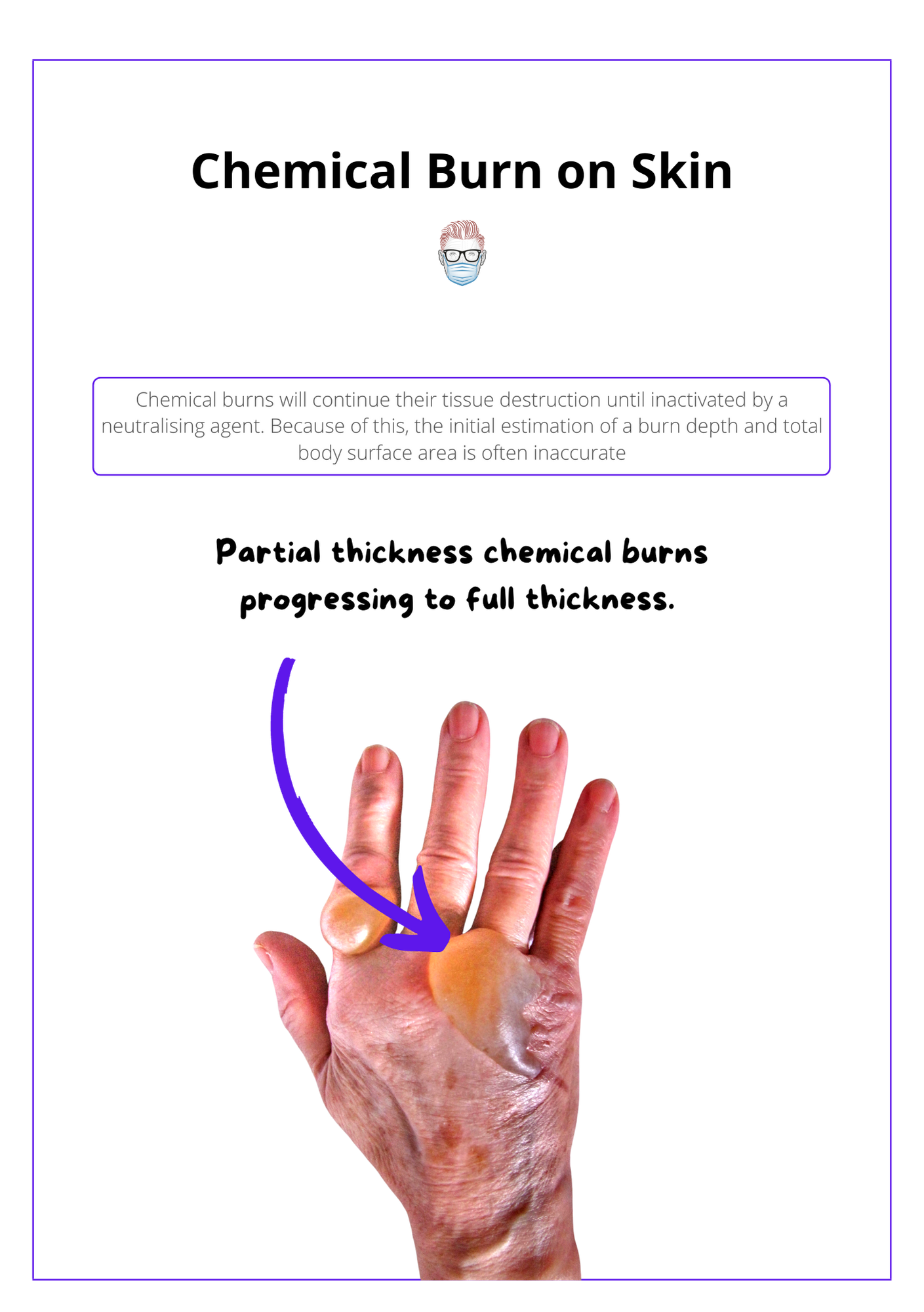In this week's edition
- ✍️ Letter from P'Fella
Plastic surgery in Gaza: Your questions, answered - 🤓 The Sunday Quiz
New winner announcement! - 🖼️ Illustration of the Week
Subglottic inhalation injury - 🎙️ Behind the 'Fella
New episode: Oral exam guide with tips - 🎓 theFellow's Corner
This week's feature: Chemical burns - 📖 What Does the Evidence Say
What is the most accurate way to determine burn depth? - 🔥 Articles of the Week
Pediatric hand burns, acute burn care, & crow's feet in corneal injury: 3 articles with 1 sentence summaries. - 💕 Feedback
Suggest ideas & give feedback!
A Letter from P'Fella
Plastic Surgery in Gaza: Your Questions, Answered
I’m really excited to share that in an upcoming podcast episode, I’ll be chatting with a plastic surgeon working in Gaza. This conversation will focus on the unique challenges of practicing surgery in a conflict zone — where the work is as much about restoring lives as it is about saving them.
Gaza is a complex region, with a lot of different perspectives, and we know there are so many layers to what’s happening there. But for this episode, we’re keeping the focus on plastic surgery. What’s it like to handle trauma and reconstructive cases in such an environment? How do surgeons manage with limited resources and under intense pressure? There is some evidence published on this topic in PRS Journal.

Plastic surgery has a deep connection to wartime. Back in World War I, Sir Harold Gillies pioneered facial reconstruction for soldiers with devastating injuries. Then in World War II, Sir Archibald McIndoe pushed burn care forward, helping RAF pilots recover after severe injuries.
The surgeon I’ll be speaking with continues that legacy in Gaza, dealing with modern-day war injuries like burns, blast trauma, and reconstructive challenges.
I also want to hear from you! What would you like to ask a plastic surgeon working in Gaza? Send in your questions via the form below or social media, and let’s bring them into the conversation.
With love,
P'Fella ❤️
The Sunday Quiz
*Drumroll🥁* New Winner Announcement!
We're thrilled to announce the winner of this edition's quiz. After six rounds of questions on plastic surgery, our top scorer is Simba!
We'll be in touch with the winner soon. Thank you to everyone who participated!

Welcome to a fresh round of The Weekly Quiz.
Each edition of thePlasticsPaper includes a quiz question designed to challenge and engage our readers. Keep your wits about you and join in every week — the winner at the end of six rounds will earn you a $100 voucher.

Illustration of the Week
Subglottic Inhalation Injury
This section we feature an anatomical illustration. This edition looks at a subglottic inhalation injury.
👇
Behind the ‘Fella
New Episode: Oral Exam Guide with Tips
Tune into our podcast for exclusive team meetings where we uncover behind-the-scenes details of the platform and discuss hot topics in plastic surgery with our fellows.
Tune in to our latest episode featuring Prof Andy Hart. We get into the viva oral exam for plastic surgery trainees; preparation strategies, the exam process, and the dynamics between examiners and candidates with a focus on the FRCS exam.
You can now listen on Spotify & Apple.
the Fellows' Corner
This Week's Focus: Chemical Burns
In case you've missed out, here's a reminder to check out our fresh articles, clinical cases, and surgical techniques.
Read below for an overview of our article on Chemical Burns.

Chemical Burn
Overview
There are 4 main groups: acids, burns, organic solvents, and inorganic solvents.
Features
The degree of chemical burn is dependent on the chemical, its concentration, and the extent of exposure.
Complications
Each chemical has specific secondary effects. For example, hydrofluoric acid has severe pain, low calcium, and raised potassium.
Management
Treat with prompt & constant water irrigation (some exceptions!). After neutralisation, manage similar to a thermal burn.
What Does the Evidence Say?
Most Accurate Way to Determine Burn Depth
Infrared thermometry has shown promise in conjunction with clinical examination (Agarwal et al., 2018), while noncontact ultrasonography demonstrated 96% accuracy in predicting healing within 3 weeks (Iraniha et al., 2000). Photographic evaluation may be useful for early distance diagnosis, with 76% equivalence to clinical evaluation (Boccara et al., 2011).
Despite the availability of advanced technologies, their adoption in U.S. burn centers is limited due to cost, availability, and perceived lack of evidence (Resch et al., 2014). LDI and indocyanine green video angiography currently offer the most accurate data-supported estimates for burn depth assessment (Devgan et al., 2006).
Articles of the Week
3 Interesting Articles with 1 Sentence Summaries
In pediatric hand burns, FTSG reduce the risk of post-graft contracture and the need for surgical release, while STSG tend to provide better cosmetic results, including superior scar appearance and color.
In acute burn care, plastic surgeons play a key role including wound assessment, systematic emergency management, precise fluid resuscitation, and wound closure with autografts or skin substitutes.
In facial burns, the absence of the "Crow's feet sign" (preservation of skin creases around the eyes during forced eyelid closure) may indicate a corneal injury that requires an ophthalmological assessment.


